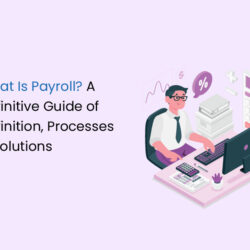What comes to mind when we talk about the social security act? We instantly think about the US and other developed countries where social security in the form of healthcare and retirement benefits are extended to working populations. India may not have a Social Security Act like in the US and the term social security may not be as popular. However, social security is not a new concept in India.
India has been offering social security benefits to the working population (even before independence in some instances). However, these are diverse laws offering different kinds of social security benefits such as healthcare benefits, life insurance, retirement benefits, pensions, disablement benefits, survivorship benefits, employee welfare and so on. Further, most of the social security laws apply only to employees in the formal sector. Those in the informal and unorganized sector are unable to access these benefits.
As a result, the Code on Social Security was passed by the Parliament and received presidential assent in 2020. The Code on Social Security, 2020 seeks to integrate diverse social security laws in the country and bring them under one roof. It seeks to amend the existing laws, making them inclusive of the informal workers and the unorganized sector including self-employed workers.
What exactly is the Code on Social Security, 2020? Which laws get consolidated by the Code? How does it benefit employees? Keep reading to find out.
History of the Social Security in India
The concept of social security is nothing new to India and has been evolving over the years to cover various aspects of the welfare of workers. The British government (in pre-independence India) had enacted a number of social security schemes in India, especially for industrial workers including the Workmen’s Compensation Act of 1923.
In 1943, they constituted the BP Adarkar Committee to create a comprehensive health insurance scheme for industrial workers. The report was submitted in 1944. The central and state governments and other interested parties gave their inputs on the report and the Workmen’s State Insurance Bill was presented to the Select Working Committee in 1947. Renamed as the Employees’ State Insurance Act, it was finally passed in 1948. This was independent India’s first social security law.
Employees’ State Insurance Act, 1948 offers comprehensive health insurance to employees and their families. It includes a range of medical benefits, cash benefits (maternity, sickness, etc.), disablement benefits and survivorship benefits, among others.
India has formulated several laws over the years to help extend social security benefits to the working population. Some of these laws include:
- The Employees’ Provident Funds and Miscellaneous Provisions Act, 1952 to offer comprehensive retirement and survivorship benefits to employees and their dependents. It enables lakhs of employees, especially in the lower income brackets, to save for and plan their retirement. It empowers them to live independently and gain a sense of financial security post-retirement.
- The Maternity Benefit Act, 1961 to extend a range of benefits to women employees. It was amended in 2017 to increase the paid maternity leave of women employees to 26 weeks (including 8 weeks before delivery) from the previous provision of 12 weeks. It also includes varying periods of paid maternity leave to adoptive mothers, commissioning mothers, those undergoing abortions/ miscarriages, etc.
- The Payment of Gratuity Act, 1972 that mandates employers to pay a lumpsum gratuity to employees upon retirement/ resignation after 5 years of service. It is a reward for meritorious and continuous contribution made by the employee to the organization.
- The Employee’s Compensation Act, 1923 to compensate employees in case they get injured or die in service due to a workplace injury.
- The Unorganized Workers’ Social Security Act (2008) seeks to extend social security coverage to the vast population of workers in the unorganized sector including gig workers, construction workers, street vendors, domestic workers, etc.
These are just some of the many social security related laws in India. We also have sector-specific social security laws such as Cine Workers Welfare Fund Act, 1981, Beedi Workers Welfare Fund Act 1976, Building and Other Construction Workers Welfare Cess Act, 1996, etc.
What Is the Code on Social Security?
The Code on Social Security, 2020 was tabled to the Parliament in 2019 as part of the massive labour law reforms being undertaken. These reforms seek to amend, integrate, and codify existing labour laws in the country into four Labour Codes, of which the Code of Social Security is one.
The Code on Social Security seeks to consolidate, amend, and codify all laws related to social security in the country, expanding its reach to all workers including those in the unorganized sector and in informal jobs. The Code is a result of the broadening definition of work and workers in the era of digital transformation, urbanization and marketplace and ecommerce selling.
The 9 Existing Laws Consolidated to Form the Code on Social Security
- Employee’s Compensation Act, 1923
- Employees’ State Insurance Act, 1948
- Employees’ Provident Funds and Miscellaneous Provisions Act, 1952
- Employment Exchanges (Compulsory Notification of Vacancies) Act, 1959
- Maternity Benefit Act, 1961
- Payment of Gratuity Act, 1972
- Cine-Workers Welfare Fund Act, 1981
- Building and Other Construction Workers’ Welfare Cess Act, 1996
- Unorganized Workers’ Social Security Act, 2008
Understanding the Code on Social Security 2020: The Major Shifts
Key Changes in Definitions
Employees: The term employees will now include all employees including those employed on contract or temporarily. The interstate migrant employees will also include self-employed workers who have migrated from home state to another. The Code also includes platform workers and gig workers including freelancers and independent contractors to factor in the explosion of these workers owing to the ecommerce and marketplace selling revolution.
Wages: One of the biggest changes that will impact how contributions are made is the definition of wages. The new definition of wages includes just the basic pay, dearness allowance and retaining allowances. All other allowances are excluded, provided these excluded allowances do not exceed 50% of the gross salaries. If it does, then the portion above 50% is included in the calculation of wages. The same applies for wages paid in kind to employees.
Registration
Every establishment must mandatorily register themselves under the Code on Social Security, 2020, even if they are already registered under any of the Central Acts. The employers must also register all their workers under applicable Chapters of the Code.
Employees working in the unorganized sector are mandated to establish their identity by registering with their Aadhar numbers. Only then can they avail all the benefits offered by the provisions of the Code. This will also increase the authenticity of the scheme, making sure the schemes aren’t misused.
Governance of Social Security for Informal Workers
The Code on Social Security mandates the appointment of representatives for all categories of employees in the National Social Security Board.
For the governance of schemes related to gig and platform workers, the governing body shall include representatives from aggregators, gig and platform workers, state and central government representatives and the Director General of ESIC.
For the governance of unorganized workers, the Board shall include representatives from the state and central governments.
Social Security for Gig and Platform Workers & The Responsibilities of Aggregators
With the rapid growth of the gig economy, there is a pressing need for social security to the growing population of gig workers. Gig workers such as delivery workers, drivers, etc. are exposed to high risks of accidents, occupational diseases and health complications owing to the nature of their work. This makes social security benefits such as health insurance, maternity benefits, disablement benefits, retirement benefits, etc. essential for their overall health and wellbeing.
The Code on Social Security places great emphasis on aggregators to extend social security to gig and platform workers, and fund relevant schemes. The contribution for the welfare of gig and platform workers is split between the state and central governments and the aggregators.
Aggregators are required to contribute 1-2% of their annual turnover to these social security schemes. This ensures that gig and platform workers gain access to a wide range of social security benefits, providing them a sense of financial security.
Social Security for Fixed-Term Employment
The various provisions under the Code on Social Security, 2020 includes contract workers who are employed for a fixed term based on a written contract. The Code holds that they should not be considered any less than any permanent employee. The provisions are extremely beneficial to contract and fixed-term employees.
This recognition of contract workers will have a massive implication on organizations that tend to hire large numbers of fixed-term employees for projects at lower salaries. Compliance to these provisions will increase the costs for employers and non-compliance will lead to legal action and heavy penalties. The Code requires organisations to pay gratuity to fixed-term employees on a pro-rata basis.
Conclusion
The Code on Social Security 2020 is a step in the right direction for the country. The Code promises to make social security accessible to the vast population of informal workers including gig and platform workers, domestic workers, contract workers, freelancers and so on. It equips them with financial security in the event of any contingency, medical emergencies or socio-economic eventualities.
If you are an employer, especially a small business, the provisions of the Code on Social Security and its many schemes can be complex and confusing. Fret not! TankhaPay is here to help you. The TankhaPay app makes the payment of social security, statutory compliance and employee management simple and straightforward.
Download the TankhaPay app now
![]()
![]()





















